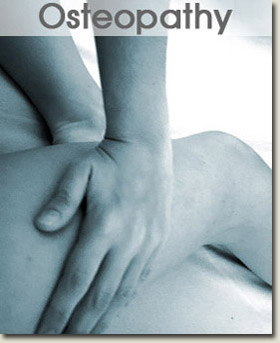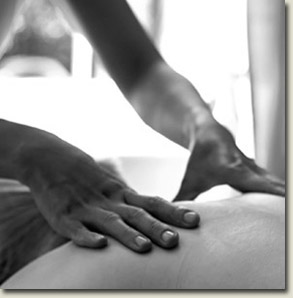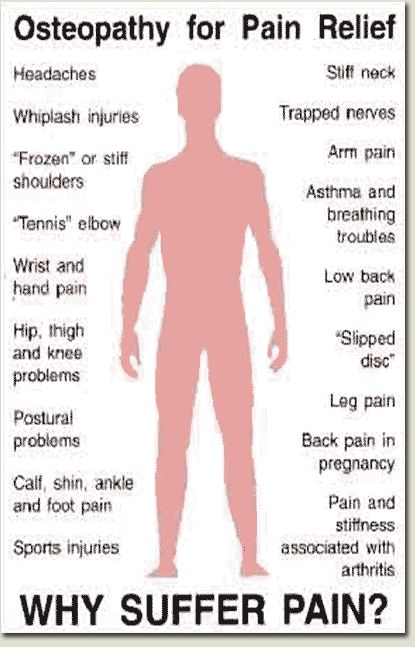Understanding Osteopathy
Osteopathy embraces the philosophy that the body has an innate or natural ability to self-regulate and to heal itself.
 What is Osteopathy?
What is Osteopathy?
Osteopathy is a form of natural holistic medicine that focuses on restoring and maintaining physical well being. Despite its name, which essentially means sick bones, osteopathy doesn't focus solely on bone health.
- Osteopathy assesses and treats movement restrictions in your body tissues that prevent you from feeling healthy and fit.
- Osteopathy is a hands on approach used to identify structural changes and rhythms in the body.
- Osteopathy is a gentle contact with the selected tissues and is used for assessment and treatment.
- Osteopathy uses very precise palpatory and manipulative techniques to treat the restrictions in tissues which prevent the various parts of the body from fulfilling their natural functions.
Osteopathic treatments aim to support the nervous, circulatory and lymphatic systems in order to correct imbalances that are believed to diminish the body's ability to heal itself and are at the root cause of discomfort, disease and illness.
Based on the belief that a healthy body is capable of healing and defending itself against infections and toxins, osteopathy seeks to correct any misalignment of bones, muscles, ligaments or tissues that compromise this self-healing ability.
 The theory is simple: for the body to remain in good health, all
parts of your body must function together properly and harmoniously, as
designed and intended. If one part of your body is restricted, the remainder
of body compensates for that restriction and that compensation may lead to
stiffness, inflammation, discomfort, pain or infection.
The theory is simple: for the body to remain in good health, all
parts of your body must function together properly and harmoniously, as
designed and intended. If one part of your body is restricted, the remainder
of body compensates for that restriction and that compensation may lead to
stiffness, inflammation, discomfort, pain or infection.
Osteopathy is a refined and subtle type of manual therapy that uses very gentle manipulative pressure to encourage the release of stresses throughout the body, including the head. It is extremely effective in treating a wide range of conditions in people of all ages, from birth to old age.
Osteopathic Manual Practitioners are trained to feel a very subtle, rhythmical shape change that is present in all body tissues. The impact of injuries and illnesses can cause a wide variety of problems both in the head and in other areas of the body. Using involuntary motion in the tissues, Osteopaths can feel whether a person is in an optimum state of health, or whether there is something preventing healthy movement of the tissues from occurring.
Most of us have been exposed to physical trauma at some stage in our life. The body may have been able to absorb the effects of an accident at the time, but a lasting strain often remains. Illnesses and emotional trauma can also leave a lasting physical effect. Gradually the body may find it more and more difficult to cope with accumulated stresses, and symptoms may start to show.
The Tools of Osteopathic Practice
The practitioners goal is to treat the cause of the dysfunction as soon as it has been detected. If left untreated, such dysfunctions will manifest themselves in the form of functional impediments, weakened defense systems, postural imbalances and pain. The methods used by the Osteopathic Manual Practitioner to treat restrictions include osteoarticular adjustments, visceral osteopathy, cranial osteopathy and normalization of myofascial tension.
- The key factor that permits this process to proceed unimpeded is the ability of the body to circulate all of its fluids and liquids, within their given structures.
- These fluids include the blood, lymph, synovial fluid, digestive juices, cerebrospinal fluid, axoplasm, and all the other intra and extracellular fluids of the body.
- These fluids are involved in all aspects of life.
- Any obstruction that impedes the circulation of fluids within the body is the focus of osteopathic assessment and treatment.
- These impediments may take the form of structural or non-structural blockages:
- Structural or physical impediments include generalized twists, curves or pulls within the body as well as specific bones, organs or tissues that are misaligned.
- Non-structural impediments may include emotional patterns that are responsible for maintaining the body in a certain adaptation of defense. These adaptations are quite often responses to stressful incidents of the past, present, or are of a repetitive nature.
Over time, the body gradually loses its ability to efficiently self-regulate and to self-heal.
Some of this loss may be due to:
- the aging process
- the prolonged influence of gravity on posture
- trauma
- accident
- illness
- surgical scarring
- childbirth
- repetitive activity
- or the cumulative effects of mental, emotional, physical and spiritual stress. These experiences may manifest themselves locally in the body or more frequently, the symptoms are experienced far from the site of the original site of occurrence.
